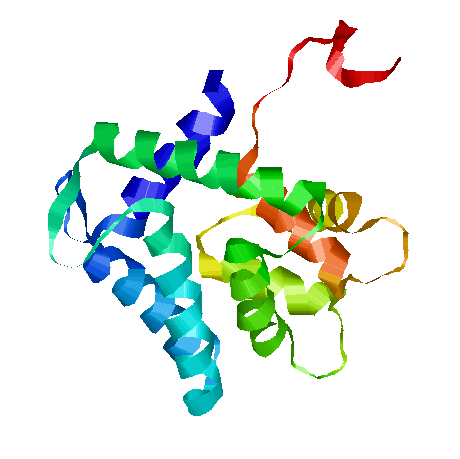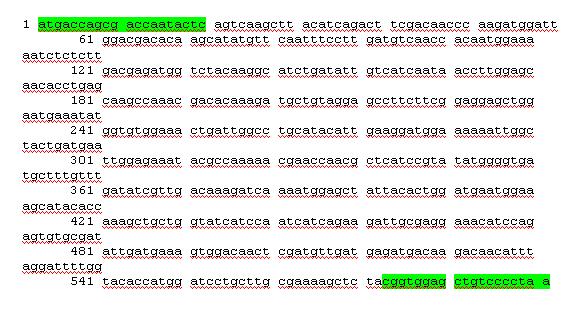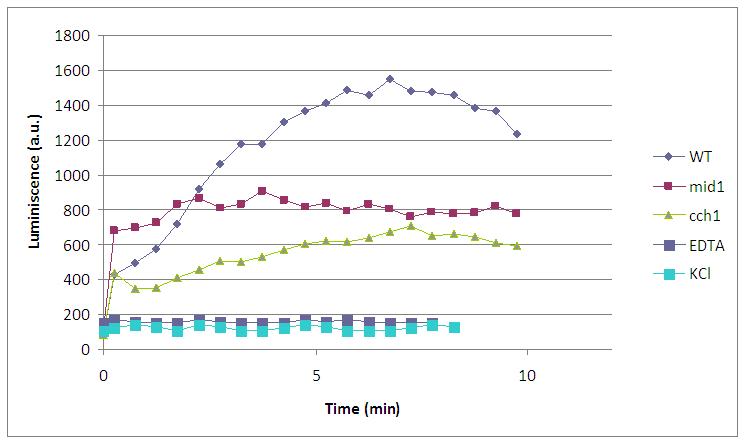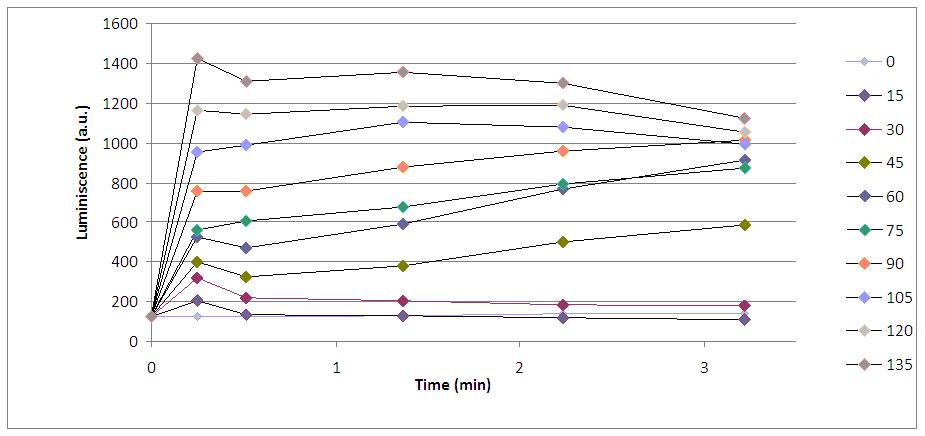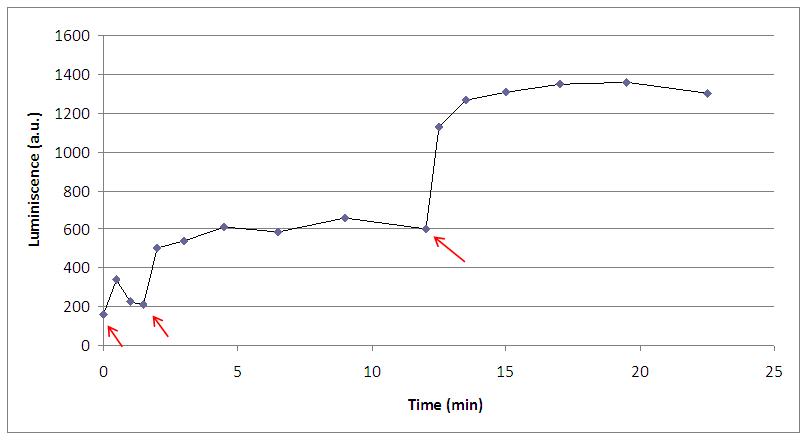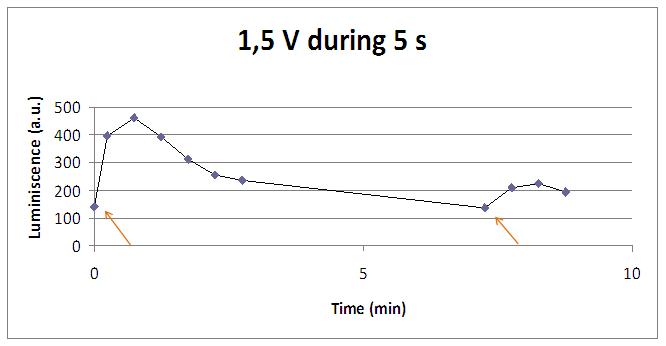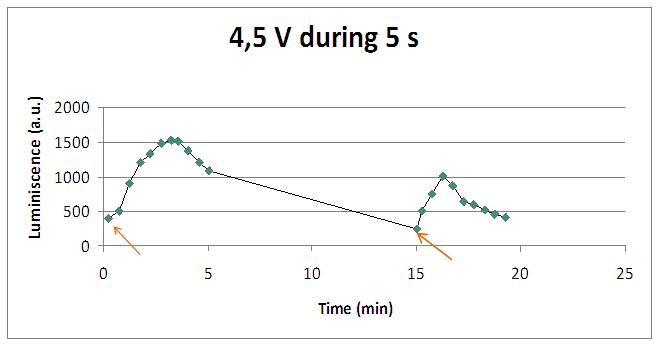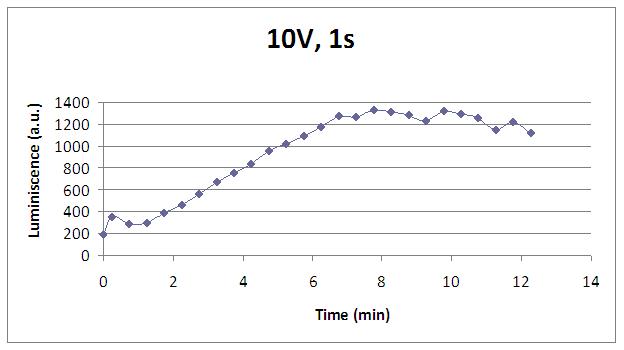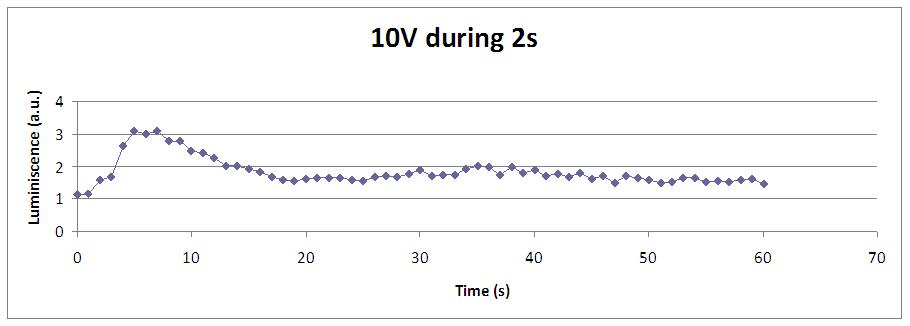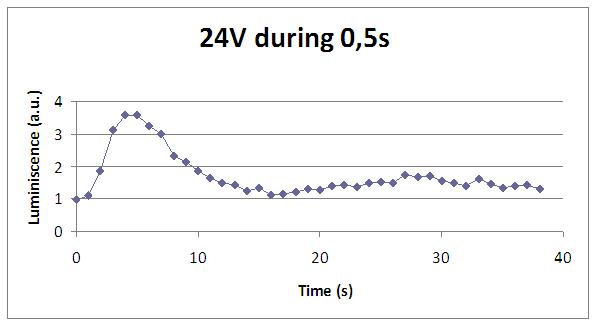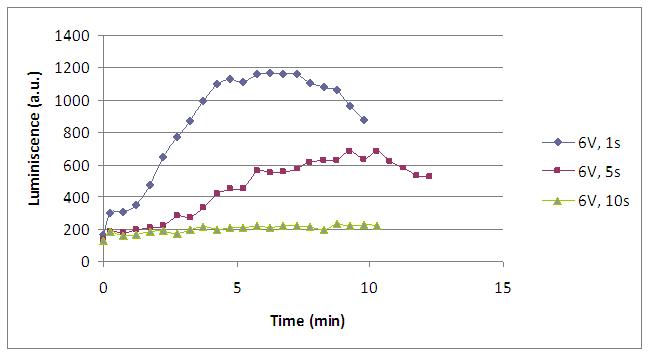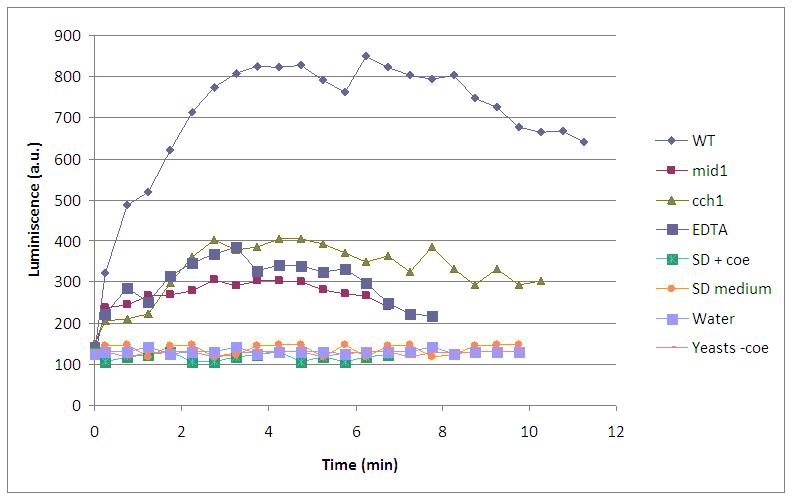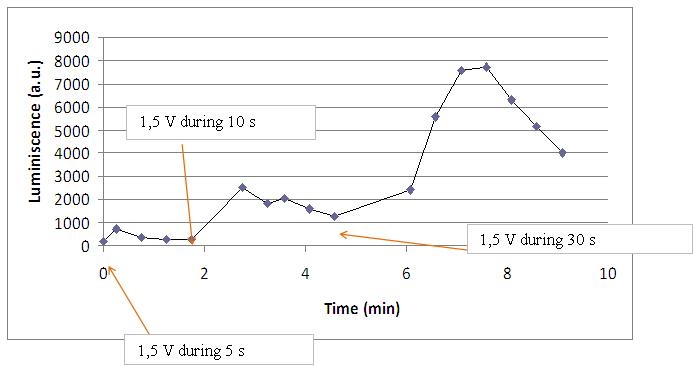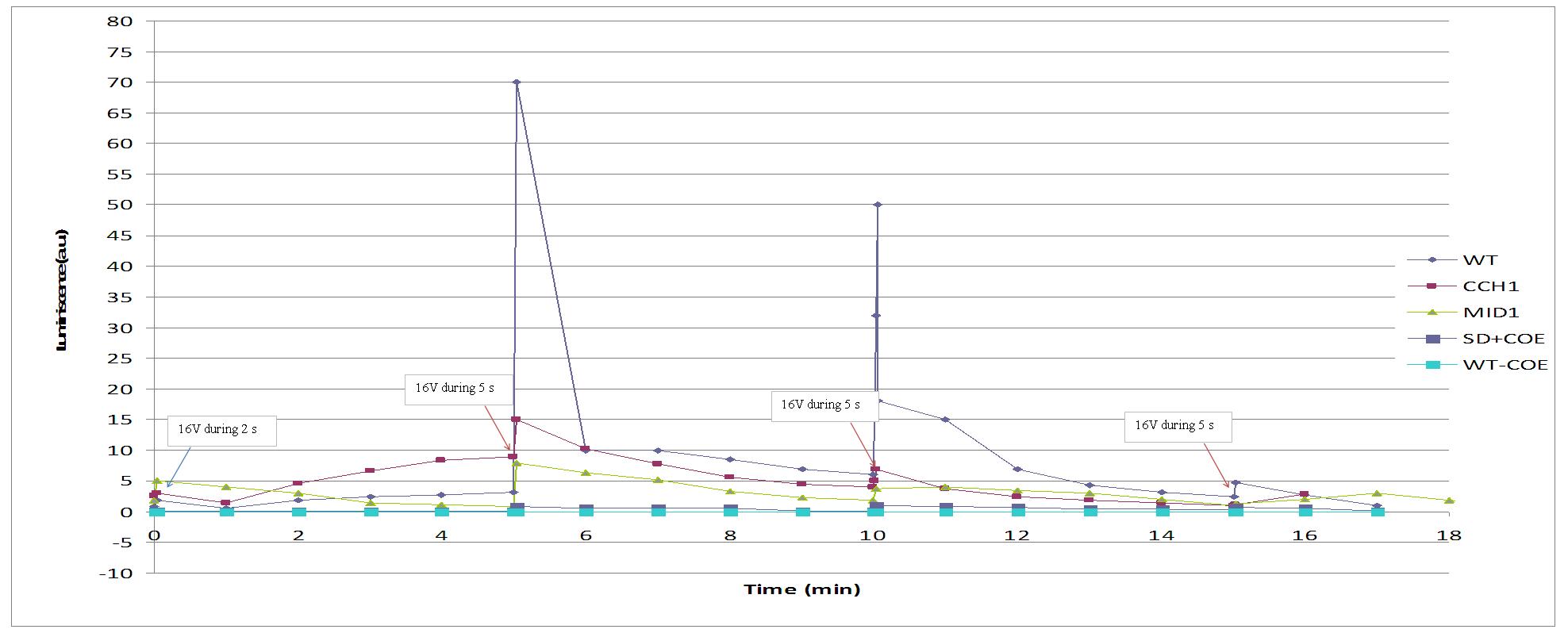Team:Valencia/Parts/Characterization
General information
AEQ is a gene which encodes for aequorin, our luminiscent protein.
It's a photoprotein isolated from luminescent jellyfish (like various Aequorea species like Aequorea victoria) and a variety of other marine organisms. It was originally isolated from the coelenterate by Osamu Shimomura, and it has been used as a reporter gene in different superior eukariotes. Nowadays, there are different aequorin types, depending on the target organism.
The aequorin which we are working with has been introduced in our yeasts by a plasmid called pEVP11/AEQ, wich encondes aequorin sequence showed below. Cells containing this plasmid are able to sintetize apoaequorin, the apoprotein of 22 kDa, and keep it in their citoplasm. So, that apoprotein can't produce luminiscence by itself, but when it binds to its cofactor coelenterazine, in presence of Ca2+, full aequorin emits light.
The two components of aequorin reconstitute spontaneously, forming the functional protein. The protein bears three EF-hand motifs that function as binding sites for Ca2+ ions. When Ca2+ occupies such sites, the protein undergoes a conformational change and converts through oxidation its prosthetic group, coelenterazine, into excited coelenteramide and CO2 (as we explain in Wetlab overview). As the excited coelenteramide relaxes to the ground state, blue light (wavelength = 469 nm) is emitted.
Sequence
Aequorin sequence is (primer binding sites are underlined in green):
Characterization
Chemical input.
In order to make our yeasts produce light, we firstly reproduce experiments made by Viladevall et al, After a lot of different tries, we finally could characterize the luminiscence curve in a discontinuos luminometer.
As we can see in the graphic, a peak of light is emited about 450 seconds before adding 60 microliters of KOH to 170 microliters of medium with WT transformed yeasts. Although we were almost sure that the mechanism that triggered that flash of light was the expected, we found properly make the same experiment with different kind of controls and make sure we were not observing any artiffact:
- Mid1: one mutant for a Calcium channel. Light is not observed because Ca2+ can’t enter into the cell and bind to the aequorin-coelenterazine complex.
- Cch1: another mutant for Calcium channel, so the absence of light can be explainned in the same way.
- EDTA: Aulthough every compound necessary for the reaction is present (including Ca2+ channels) light is not emited because EDTA is a divalent ion quelant, so Ca2+ is quenched and not useful for the emission.
- KCl: another negative control. The Absence of the -OH group prevents the oppening of calcium channels and makes yeasts produce no light.
But we wanted to characterize in detail this kind of response.
To complete the work with the chemical input, we though KOH amounts could influence in the quantity of emited light, so we repited the experiment with different concentrations of KOH.
As we can see, the volume of added KOH (from 15 microliters to 120) is related to the luminiscent peak. Although there is not directly proporcional, luminiscence intensity is increased when we increase the quantity of KOH we put in the sample (always 170 microliters of medium with yeasts).
Characterizasing the response to the KOH we also found interesting to determinate the reproducibility of the process.
By adding 30 microliters of KOH at the time where the rows indicates us, we discovered that before the first peak, cells couldn’t return to the basals levels, and every new shock make yeasts produce light in higher levels than the last one.
Electrical input
When the experiments with an alkali input showed us that yeasts were able to produce light because of their transformation, we tried with our ambitious goal: stimulate calcium channels with an electrical input.
We reproduced the mentionated Arinyo’s protocol, incubating the transformed yeasts with coelenterazine, but changing the KOH by electricity. Surprisingly, we found that light was also produce in a very similar way. We tryied with different times and voltages in order to find the optim conditions for a big peak of light. Some of our graphics are theese:
We realised that the time of exposure to the electrical stimulus was crucial, even more that the aplied voltage. That means, if we increased the voltage at very short times, cells could produce a more abrupt peak of light. But if we increased the time of exposure to the electricity, we observe a less defined response, with more flattened peaks.
That’s probably because a big exposure time of electrical input damages and killes the yeasts, making them to release their components to the medium, including the aequorin-coelenterazine-Ca2+ complex, so the emission of light is more uniform in time, instead of the production of the flash produced by the Calcium enetering in the cell.
In the case of very little voltages (like 1,5V) this observation is not carried out by our yeasts. The reason must be that the electrical input is too low, so yeasts don’t die so easily as with more elevated voltage, and a better response is produce with a more prolongated electrical shock.
This graphic clearly show us that using a same voltage, we obtain a better response with the shortest time of the electrical input.
Our controls discard the idea of an artifact. For example, light could be made by a spark produced during the discharge. It was not very probable, because the peak observed was produce near 400 seconds before of the stimulus. But, another time, when cells without coelenterazine or mutants are used, we see no light.
Studying the repetibility of the process, this is a little different from the chemical stimulus, but the system has a similar behaviour, and we can stimulate several times the same sample getting a response. However, every next shock produces a fewer peak of light. We hace two hypothesis: one of them is that a part of our yeasts die meanwhile the electrical stimulus. The other one is that coelenterazine is not reusable, so a proportion of it runs down in every emission of light.
SCREEN
Using that information and ability of our yeasts, we decided to design a bio-screen, where every single pixel was composed of a group of luminiscent cells and individualy stimulated with a cable. We could, then, control which pixel gets iluminated, forming the image/picture we want (whose resolution depends on the number of pixels we have).
This simple mechanism is the first example of electronic communication between computers and single celled organisms. Thus, our engineered yeast are a state-of-art bioelectronic device.
It is just like a bacterial photographic system, but it's digital. Within seconds, instead of hours, you can get an image formed of living cells.
And, the chose the calcium signaling because it is the fastest known modality of signaling in biology, and will allow for a fast refreshing rate of the screen.
 "
"
